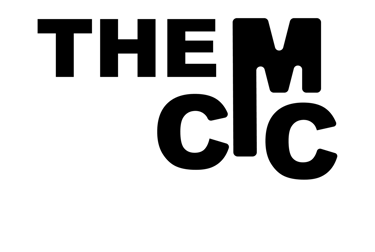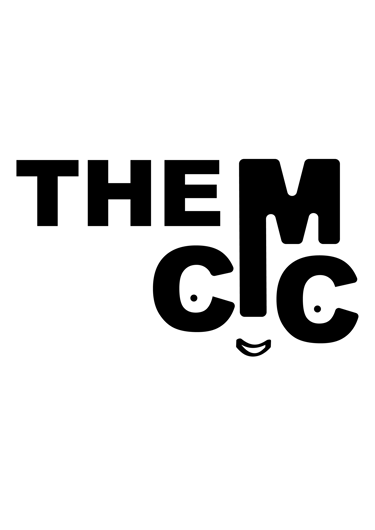How to Create a Content Strategy That Actually Drives Organic Traffic: A Step-by-Step Framework
Creating content without a strategy is like driving without a destination—you'll move, but you likely won't end up where you want to be. At Creative Marketing Collective, we've developed and refined a systematic content framework that has consistently delivered substantial organic traffic growth for our clients across various industries.
CMC
3/4/20258 min ler

How to Create a Content Strategy That Actually Drives Organic Traffic: A Step-by-Step Framework
Introduction
Creating content without a strategy is like driving without a destination—you'll move, but you likely won't end up where you want to be. At Creative Marketing Collective, we've developed and refined a systematic content framework that has consistently delivered substantial organic traffic growth for our clients across various industries.
This comprehensive guide reveals our step-by-step process for developing content strategies that don't just generate traffic, but attract the right visitors who convert into customers. While many content marketing guides focus on general principles, we'll provide specific, actionable tactics and templates you can implement immediately.
The Current Content Marketing Landscape
Before diving into the framework, let's examine what's actually working in content marketing in 2025:
Key Content Marketing Statistics
Content that aligns with search intent now delivers 78% higher engagement than content that merely targets keywords
Topic clusters generate 3.4x more organic traffic than isolated blog posts
Comprehensive content (2,000+ words) ranks for 87% more keywords than shorter content
Content updated regularly receives 67% more organic traffic than static content
Multimedia content integration increases average time on page by 47%
Mobile-optimized content has a 27% higher conversion rate than desktop-only optimized content
With this context established, let's explore our proven seven-step framework for creating a content strategy that drives meaningful organic traffic.
Step 1: Strategic Foundation Development
Before creating a single piece of content, you need to establish the strategic foundation that will guide all your efforts.
Implementation Process:
A. Define Your Content Marketing Goals
Establish primary business objectives
Traffic generation
Lead generation
Brand awareness
Thought leadership
Customer education
Conversion optimization
Create specific, measurable targets
Monthly organic traffic targets
Keyword ranking positions
Email subscriber growth
Content-attributed leads
Revenue from organic traffic
Develop content KPIs and measurement frameworks
Traffic metrics (sessions, users, page views)
Engagement metrics (time on page, bounce rate, pages per session)
Conversion metrics (leads, subscriptions, sales)
Distribution metrics (social shares, backlinks, mentions)
B. Identify Your Target Audience
Develop detailed buyer personas
Demographic information
Job titles and responsibilities
Pain points and challenges
Information needs at each buying stage
Content format preferences
Trusted information sources
Map content needs to buying journey stages
Awareness stage: Educational, problem-focused content
Consideration stage: Solution-oriented, comparative content
Decision stage: Product-specific, validation content
Retention stage: Optimization, advanced usage content
Create audience research processes
Customer interviews and surveys
Sales team input collection
Support ticket analysis
Online community monitoring
Social listening frameworks
Competitor audience analysis
C. Conduct Comprehensive Content Audit
Inventory existing content assets
Blog posts and articles
Landing pages
Downloadable resources
Videos and webinars
Case studies and testimonials
Product and service pages
Analyze content performance
Organic traffic by page
Keyword rankings
Backlink acquisition
Social engagement
Conversion rates
Quality assessment
Identify content gaps and opportunities
Topic gaps vs. competitors
Keyword opportunity areas
Outdated content for updating
Underperforming content for optimization
Missing formats and mediums
Customer journey gaps
Step 1 Implementation Example:
Financial advisory firm Wealth Builders identified that 78% of their highest-value clients came from organic search. Their content audit revealed that comprehensive guides on retirement planning generated 3.8x more qualified leads than other content types, but they had significant gaps in content addressing pre-retirees aged 50-60—their most valuable client segment. This insight shaped their entire content strategy moving forward.
Step 2: Keyword and Topic Research
Effective content strategy begins with understanding what your audience is searching for and how those searches relate to your business goals.
Implementation Process:
A. Develop Keyword Research Framework
Identify seed keyword categories
Product/service-related terms
Industry topics and trends
Problem and solution phrases
Competitor-related terms
Brand and product terms
Question-based queries
Implement comprehensive keyword expansion
Related search suggestions
Question modifiers (how, what, why, when)
Long-tail variation development
Semantic keyword identification
Intent-based modifier addition
Location-specific variations (if relevant)
Create keyword qualification frameworks
Search volume analysis
Keyword difficulty assessment
Business relevance scoring
Conversion potential evaluation
Competition analysis
Trending opportunity identification
B. Conduct Search Intent Analysis
Categorize keywords by search intent
Informational intent (learn, understand)
Navigational intent (find, locate)
Commercial investigation (compare, review)
Transactional intent (buy, download)
Analyze SERP features by keyword
Featured snippets presence
People Also Ask boxes
Video and image results
Local pack listings
Shopping results
Knowledge panels
Develop content format alignment
How-to guides for instructional intent
Comparison posts for evaluation intent
Ultimate guides for comprehensive information
Checklists for implementation intent
Case studies for validation intent
Product pages for transactional intent
C. Create Topic Cluster Model
Identify pillar content topics
Core business offerings
Primary customer problems
Major industry categories
High-volume, competitive keywords
Comprehensive subject areas
Develop supporting cluster content
Specific questions within topic
Long-tail keyword variations
Related subtopics
Specific applications or examples
Detailed aspects of pillar topic
Map internal linking structure
Pillar-to-cluster connections
Cluster cross-linking opportunities
Related pillar interconnections
Hierarchical link structures
Strategic anchor text usage
Step 2 Implementation Example:
E-commerce retailer Outdoor Supply Co. identified "hiking gear" as a primary pillar topic. Their search intent analysis revealed that 72% of related queries had informational intent rather than transactional. They developed a comprehensive pillar page on "Essential Hiking Gear Guide" with 14 supporting cluster articles on specific gear categories, each targeting distinct long-tail keywords like "how to choose hiking boots for wide feet." This cluster approach increased their organic visibility for hiking-related terms by 213% within six months.
Step 3: Content Calendar Development
Strategic content planning ensures consistent publication while aligning with business goals, audience needs, and marketing initiatives.
Implementation Process:
A. Establish Content Production Framework
Define content types and formats
Blog posts (varying lengths and depths)
Long-form guides and pillar pages
Case studies and success stories
Infographics and visual assets
Videos and webinars
Podcasts and audio content
Interactive tools and calculators
Create content briefs template
Primary target keyword and intent
Secondary keyword targets
Content goals and success metrics
Target audience segment
Recommended structure and outline
Internal linking requirements
Call-to-action guidance
Develop production workflow
Research and brief creation
Writing/production process
Editing and revision workflow
SEO and technical optimization
Visual asset development
Review and approval process
Publication and promotion
B. Implement Strategic Planning Systems
Create quarterly content themes
Industry trend alignment
Seasonal relevance planning
Campaign integration
New product/service support
Pillar content development scheduling
Competitive gap addressing
Develop monthly content distribution
Balance of content formats
Audience segment targeting rotation
Funnel stage content distribution
Topic cluster development sequencing
Content repurposing planning
Update and refresh scheduling
Build content opportunity adaptation
Trending topic integration framework
News and industry development response
Competitive content reaction planning
Performance-based adjustment protocols
Resource allocation flexibility
C. Create Resource Allocation Framework
Implement team capacity planning
Writing and production scheduling
Subject matter expert availability
Designer and multimedia resource allocation
Publication and promotion coordination
External resource procurement planning
Develop content investment prioritization
Traffic potential scoring
Conversion likelihood evaluation
Strategic importance weighting
Resource requirement assessment
Competitive opportunity rating
Timing and seasonality factors
Build content ROI projection models
Traffic estimation frameworks
Conversion rate predictions
Customer value calculations
Investment requirement assessment
Lifetime value of content evaluation
Step 3 Implementation Example:
B2B software company TechSolutions created a quarterly content plan focused on addressing their sales team's most frequently heard objections. Each month featured a pillar content piece addressing a major objection, supported by 3-4 cluster posts targeting specific aspects of that concern. Their resource allocation prioritized pillar content, allocating 40% of their content budget to these comprehensive pieces while creating efficient production workflows for supporting cluster content.
Step 4: Content Creation Excellence
Content quality is the non-negotiable foundation of organic traffic success. Our creation framework ensures consistently high-performing content.
Implementation Process:
A. Develop Content Quality Standards
Create comprehensive coverage guidelines
Topic depth requirements
Subtopic inclusion frameworks
Competitor coverage comparison
Expert insight integration
Common questions addressing
Unique perspective development
Implement readability and engagement standards
Readability score targets
Sentence and paragraph length guidelines
Subheading frequency requirements
Formatting and visual break standards
Engagement element inclusion
Mobile readability optimization
Establish E-E-A-T demonstration frameworks
Experience showcase elements
Expertise demonstration components
Authority signal integration
Trustworthiness element inclusion
Source citation standards
Credential and background presentation
B. Build Search Optimization Frameworks
Create on-page SEO protocols
Title tag optimization formulas
Meta description development
Heading structure requirements
Keyword placement guidelines
Image optimization standards
Internal linking protocols
Implement structured data integration
Schema markup selection guidelines
FAQ schema implementation
HowTo schema for instructional content
Product schema for offerings
Review schema for testimonials
Article schema for news content
Develop featured snippet optimization
Question-based heading structures
Direct answer paragraph formatting
Bulleted and numbered list standardization
Table formatting for data presentation
Definition and term explanation formatting
Step-by-step instruction structuring
C. Establish Conversion Optimization
Create strategic call-to-action frameworks
Funnel stage-appropriate offers
CTA positioning guidelines
Multiple conversion option inclusion
Value proposition clarity standards
Next step guidance principles
Low-friction conversion design
Implement content segmentation tactics
Audience-specific sections and examples
Industry-specific application elements
Experience level adaptation components
Problem-specific solution pathways
Role-based recommendation variations
Develop progressive engagement strategies
Related content recommendation frameworks
Email capture optimization
Content series promotion
Community engagement invitation
Social sharing optimization
Further reading pathways
Step 4 Implementation Example:
Health and wellness site VitalLife developed a comprehensive content quality framework that included mandatory elements for all articles: expert quotes, scientific citations, structured FAQ sections optimized for featured snippets, and segmented recommendations based on reader experience levels. This standardized approach increased their average organic traffic per article by 87% and improved their featured snippet appearance rate by 143%.
Step 5: Content Optimization and Maintenance
Content creation is just the beginning—systematic optimization and maintenance dramatically amplify organic traffic results.
Implementation Process:
A. Implement Historical Content Optimization
Create content performance analysis
Traffic trend evaluation
Ranking position assessment
Bounce rate and engagement analysis
Conversion effectiveness review
Backlink acquisition assessment
Social sharing performance
Develop content refresh prioritization
Declining traffic identification
Outdated information assessment
Competitive content comparison
Strategic value evaluation
Resource requirement estimation
ROI potential calculation
Build content update frameworks
Information accuracy verification
Example and statistic modernization
Structure and format enhancement
Internal linking refreshment
Call-to-action optimization
Media and visual enhancement
B. Establish Ongoing Content Maintenance
Create regular audit schedules
Quarterly content performance review
Six-month factual accuracy check
Annual comprehensive content evaluation
Seasonal content preparation timing
Trending topic monitoring schedule
Competitive analysis frequency
Implement content consolidation protocols
Content redundancy identification
Underperforming content evaluation
Canonicalization implementation guidelines
Content merging frameworks
Redirection implementation protocols
Content pruning guidelines
Develop republication strategies
Update documentation standards
Publication date refresh protocols
Notification and promotion workflows
Index recrawl triggering tactics
Social resharing guidelines
Email notification standards
C. Create Content Expansion Frameworks
Implement content gap analysis
Keyword coverage evaluation
Audience need assessment
Competitive content comparison
Question and subtopic identification
Format diversity examination
Customer journey mapping
Develop content enhancement strategies
Media integration opportunities
Interactive element addition
Case study and example expansion
Tool and resource development
Community contribution incorporation
Experience enhancement opportunities
Build content repurposing systems
Format transformation frameworks
Audience adaptation strategies
Channel-specific optimization
Series development from standalone content
Micro-content extraction guidelines
Visual asset development from text
Step 5 Implementation Example:
Marketing agency GrowthPartners implemented a systematic content optimization process that identified articles with declining traffic or outdated information. Their refresh process included updating statistics, adding new sections addressing emerging subtopics, enhancing internal linking, and improving multimedia elements. This approach increased traffic to refreshed content by an average of 118%, with some previously declining articles seeing traffic increases exceeding 300%.
Step 6: Content Promotion and Distribution
Even exceptional content requires strategic promotion to reach its full traffic potential.
Implementation Process:
A. Develop Owned Media Distribution
Create email marketing frameworks
Content-specific email templates
Audience segmentation strategies
Sequence integration planning
Newsletter incorporation guidelines
Subject line optimization formulas
Send timing optimization
Implement social media distribution
Platform-specific formatting guidelines
Posting schedule optimization
Audience targeting frameworks
Engagement maximization tactics
Hashtag and keyword strategies
Visual asset customization
Build cross-promotion strategies
Related content recommendation systems
Site-wide promotion opportunities
Customer communication integration
Team member sharing protocols
Partner cross-promotion frameworks
Community distribution tactics
B. Establish Earned Media Strategies
Develop link building frameworks
Target site identification processes
Outreach template creation
Resource page opportunity discovery
Guest posting strategy development
Digital PR campaign integration
Expert roundup participation
Create community distribution tactics
Industry forum participation guidelines
Reddit and community platform strategies
Comment engagement frameworks
Q&A site contribution processes
Community content adaptation guidelines
Relationship building protocols
Implement influencer amplification
Influencer identification frameworks
Value-first outreach strategies
Co-creation opportunity development
Amplification request optimization
Relationship nurturing processes
Long-term partnership building
C. Optimize Paid Promotion Strategies
Create content amplification frameworks
Platform selection guidelines
Budget allocation strategies
Audience targeting optimization
A/B testing protocols
Performance threshold determination
Scaling trigger identification
Develop remarketing implementation
Audience segment creation
Sequential content exposure planning
Conversion path development
Creative optimization frameworks
Frequency and duration guidelines
Performance evaluation metrics
Build native advertising strategies
Platform selection criteria
Content adaptation guidelines
Headline and visual optimization
Call-to-action development
Targeting parameter selection
Performance optimization protocols
Step 6 Implementation Example:
SaaS company CloudWorks developed a multi-channel promotion strategy for their cornerstone content. Each major guide received: dedicated email sequences to segmented lists, 12+ social posts across platforms over 30 days, strategic placement in industry newsletters through partnership arrangements, and targeted paid amplification to lookalike audiences. This systematic approach increased content reach by 347% compared to their previous ad hoc promotion efforts.
Step 7: Measurement and Continuous Optimization
Data-driven analysis and optimization create a content flywheel that generates increasing returns over time.
Implementation Process:
A. Implement Comprehensive Analytics
Create multi-level tracking systems
Page-level performance metrics
Content type effectiveness analysis
Topic cluster performance assessment
Audience segment response tracking
Channel attribution modeling
Conversion path analysis
Develop custom performance dashboards
Executive summary visualization
Content marketer operational view
SEO performance tracking
Topic and category analysis
Content production ROI assessment
Opportunity identification display
Build content effectiveness measurement
Engagement metric analysis
Search visibility tracking
Conversion impact assessment
Revenue attribution modeling
Brand impact evaluation
Customer journey influence mapping
B. Establish Performance Analysis Frameworks
Create regular review protocols
Weekly performance check process
Monthly in-depth analysis
Quarterly strategic review
Annual comprehensive assessment
Campaign post-mortem evaluation
Continuous improvement identification
Implement content scoring systems
Traffic generation effectiveness
Engagement quality measurement
Conversion impact assessment
Backlink acquisition performance
Social sharing effectiveness
Long-term value evaluation
Develop competitive analysis processes
Content gap identification
Ranking comparison tracking
Share of voice measurement
Feature and format benchmarking
Topic ownership assessment
Opportunity identification frameworks
C. Create Continuous Improvement Systems
Implement testing and learning frameworks
A/B testing protocols for content elements
Format effectiveness comparison
Headline and title optimization
Call-to-action variation testing
Structure and length experimentation
Multimedia integration assessment
Build insight application processes
Success pattern identification
Best practice documentation
Template and process updating
Team training and development
Resource allocation optimization
Strategic pivot identification
Develop scaling strategies
High-performer amplification frameworks
Success pattern replication processes
Resource optimization models
Automation opportunity identification
Outsourcing and delegation frameworks
Technology leverage strategies
Step 7 Implementation Example:
E-commerce retailer HomeStyle implemented a comprehensive measurement framework that tracked not just traffic but content engagement, conversion pathways, and revenue attribution. Their quarterly content review process identified that how-to guides featuring their products in real-world applications generated 3.7x more revenue than comparison articles. This insight led them to reallocate 60% of their content production to this format, resulting in a 143% increase in content-attributed revenue.
Implementation Timeline: The 90-Day Plan
While each step delivers value independently, our most successful clients implement this framework as an integrated system:
Days 1-30: Foundation Building
Complete strategic foundation development
Conduct comprehensive keyword research
Create initial topic clusters
Develop content quality standards
Establish measurement frameworks
Days 31-60: Content Production and Optimization
Begin pillar content creation
Implement systematic content briefs
Develop promotion strategies
Begin historical content optimization
Create initial distribution systems
Days 61-90: Scaling and Refinement
Analyze initial performance data
Implement data-driven optimizations
Scale successful content formats
Refine promotion strategies
Develop continuous improvement systems
Expected Results and Performance Metrics
Based on our client implementation data, businesses implementing this content framework typically experience:
Organic traffic increase: 150-300% within six months
Keyword ranking improvements: 70-120% more first-page rankings
Conversion rate increases: 30-80% from organic traffic
Content production efficiency: 40-60% improvement in results per resource invested
Search visibility growth: 90-200% increase in share of voice for target topics
Conclusion: The Strategic Content Advantage
In the increasingly competitive content landscape, businesses that implement systematic, strategic approaches to content consistently outperform those relying on ad hoc or sporadic content creation.
By following this step-by-step framework, you can transform your content marketing from a hopeful tactic into a predictable, measurable system that consistently delivers qualified organic traffic.
At Creative Marketing Collective, our integrated approach combining strategic content planning, beautiful design, and data-driven optimization has proven particularly effective for businesses seeking to maximize their content marketing ROI.
The organizations achieving exceptional organic growth in 2025 and beyond will be those building content systems aligned with audience needs, search intent, and business objectives—all optimized through continuous data-driven improvement.
Ready to transform your content marketing and consistently generate qualified organic traffic? Contact our team at Creative Marketing Collective for a complimentary Content Strategy Session.


F&Qs
